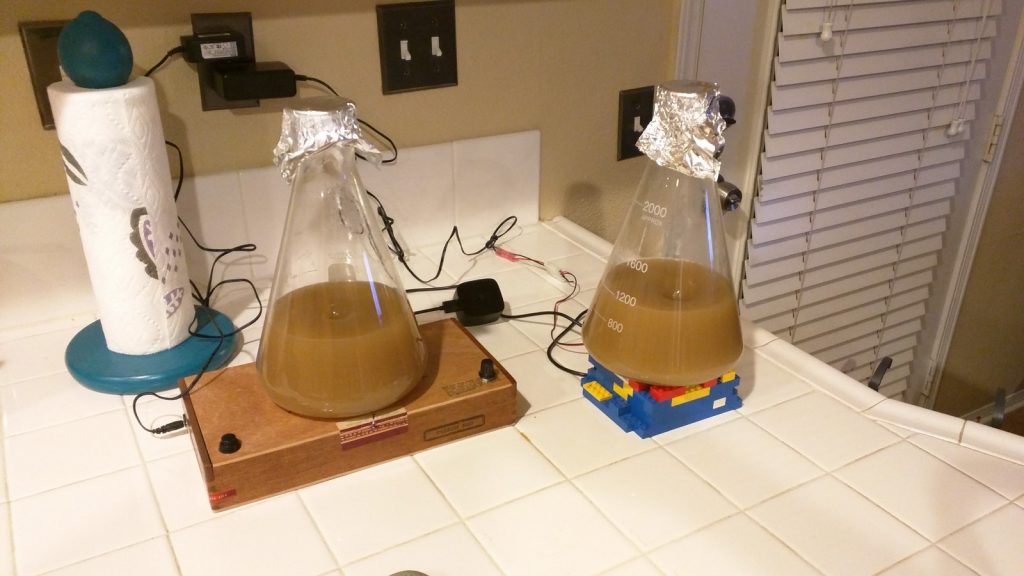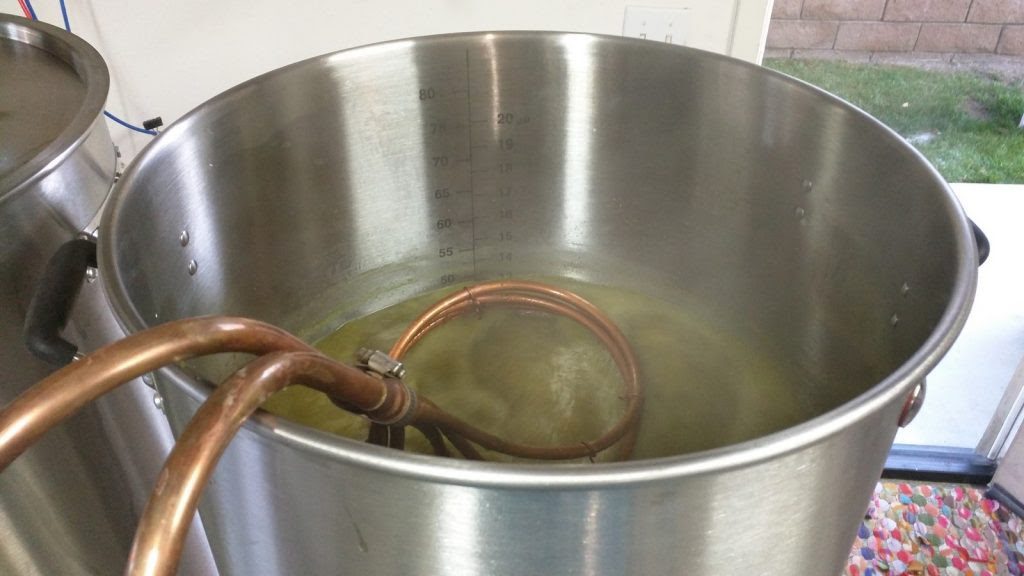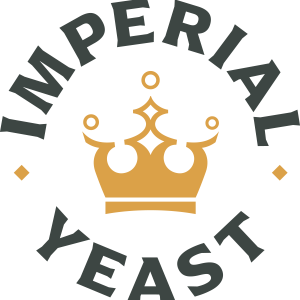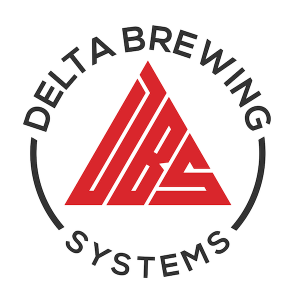 Ray has been homebrewing since 2012, transitioning to all-grain after brewing only one extract batch. Ray is a critical thinker with a proclivity for questioning convention, an uncanny ability to notice conjecture, and a passionate desire to put tradition to the test. Originally hailing from the Great White North, Ray currently lives in Corona, CA with his wife and 2 kids. Joining the crew in 2015, Ray is one of the longest standing Brülosophy contributors and played a major role in shaping Brülosophy into what it is today.
Ray has been homebrewing since 2012, transitioning to all-grain after brewing only one extract batch. Ray is a critical thinker with a proclivity for questioning convention, an uncanny ability to notice conjecture, and a passionate desire to put tradition to the test. Originally hailing from the Great White North, Ray currently lives in Corona, CA with his wife and 2 kids. Joining the crew in 2015, Ray is one of the longest standing Brülosophy contributors and played a major role in shaping Brülosophy into what it is today.
| ABOUT RAY |
How did you get into brewing?
I fell in love with Trappist ales, originally Chimay Blue, which would set me back $11-14 per 750 ml bottle. When I realized I could brew my own for something like 90% less than that (ignoring capex), I started digging more into it and eventually jumped into research mode. My wife’s cousin, Matt, had brewed a bit before and was interested in starting back in around the same time I was, so I had someone with experience and interest at the same time to bounce ideas off.
What was your first batch and how did it turn out?
My first batch was an Irish Red Ale that came with with my starter kit from MoreBeer. I was really digging Smithwick’s at the time and still find it to be great beer. It was the first and only extract with steeping grains batch I made and it came out great, in fact 3 out of 3 tasters preferred it blind to Smithwick’s bottles of unknown age or storage conditions. Before those bottles were carbonated, I had already refurbished an old picnic cooler into a mash tun, made “Lego my stirplate,” and had a batch of all-grain Belgian Dubbel in the fermentor.
How did you get involved with Brülosophy?
Marshall and I started chatting online about our very similar brewing setups, which we arrived at separately, right around the time Brülosophy became a thing. At one point, I warned him to include some gussets in his brew-counter construction to avoid catastrophe.
As we talked, we found we had a lot in common in terms of our families and approaches to brewing. We ended up discussing potential xBmts, an abbreviation I coined out of complete annoyance with typing out “exBEERiment,” as well as the methodology employed. He eventually sent me some Schwarzbier and enlisted my palate in one of the first fermentation temperature xBmts as a distant participant, the experience of which led to me writing a self-reflective article on dogma and expectations, my first for the site. It wasn’t much later that I joined what was then only a two person crew and began regularly brewing for the xBmt series.
What xBmt has surprised you the most?
Unquestionably, mash temperature. I was so sure it was important to a beer’s final character. You can easily measure the impact with a hydrometer, but in my initial tastes of the xBmt beers I brewed, I couldn’t taste it. I’m not willing to say that mash temperature doesn’t matter yet… but my view has moved it pretty far down the list compared to, say, chloride to sulfate ratio based on my impressions of the final beer character.
Have the xBmts influenced your current brewing perspectives?
Absolutely. I don’t brew a lot differently today, aside from being less concerned about the specific value of mash temperature, but I think of myself a bit like the sound engineer at a concert in front of a big panel of knobs and sliders– the biggest influence has been a shift in my understanding of how much of an impact a given adjustment will make. Mash temperature is a much lower-gain control knob than I used to believe, so too with fermentation temperature and whirlpool hopping, though water chemistry and dry hop timing seem to have a greater effect than I’d given credit to before testing things out.
What are your 3 favorite styles of beer?
West Coast IPA
So, sue me. I like an IPA that doesn’t look like a yeast starter. Give me a Hangar 24 Betty, Firestone Walker Union Jack, Sierra Nevada Tropical, or a Pizza Port Swami’s and keep your oat-milked (I didn’t even realize oats produced milk), biotransformed, interrupted-flocculation, SO4-deficient IPAs to yourself. I still like a fruit forward IPA that isn’t harshly bitter, but my favorites are all on the crisp, drinkable, and decidedly clear side of the spectrum.
Pilsner
I love a good, fresh, hoppy Pilsner. Usually easiest found at home, but occasionally out and about as well. Czech or German are both fine, but I find I like my homebrew version better with a heavier hand on the gypsum. I don’t have a lot of words to express what exactly I love about Pilsner, its just great beer.
Hoppy American Amber Ale
This is the only beer I think I make the best in the world of, at least for my tastes. I want an Amber Ale that’s equally happy being consumed on a hot summer day on a patio as it is with a hearty meal in the fall. Great American Ambers are exactly this. Malty but never sweet, hoppy but not fruity, bitter but not harsh, toasty but not acrid. No beer exemplifies the notion of balance more than a west coast hoppy American Amber, and frankly, most commercial examples fall short of my platonic ideal that Make America Amber Again aspires to.
What are your favorite ingredients?
Malt: Pale Chocolate Malt
That dry toasty flavor Pale Chocolate imparts is so appealing to me. No harshness, not sweet, just the perfect malt to balance a grainbill to the “malty” side of the spectrum without imparting a caramel or fruity note.
Hops: Citra
Call me a follower or whatever, but to me there’s no better all-inclusive hop than Citra. It has it all, like a Five Alive fruit punch. When it comes to hops, Citra is the only hop I’ve found is really superb alone, though it’s a tad more perfect with a complement of Amarillo.
Yeast: WLP090 San Diego Super Yeast
Neutral character, terrific performance at a wide range of temperatures, and flocculates like rocks. The perfect clean ale yeast.
What’s your desert island beer?
Funnily enough, I just had this conversation at a party and said it would be my homebrewed Make America Amber Again. Then I was informed it was not qualified because if I was on a desert island, I wouldn’t be able to brew it, so I’d need to pick a beer that could fall off a boat or airplane. So, I think it’s Pizza Port Swami’s IPA.
What music do you listen to while brewing?
I’ve never done any kind of illicit drug, but I love stoner music. Dirty Heads, Sublime, Bob Marley (…and Ziggy…and Damian), Rebelution, Iration, Barrington Levy, Pepper, etc. Add in the Roots, some Dylan and Johnny Cash, and some early 2000’s rock from the likes of Jimmy Eat World, Postal Service, Ozma, and Piebald, and you get a pretty weird mix that frankly may belong on a playlist together but… its me.
What else do you enjoy doing besides brewing?
I love fly fishing, hiking, backpacking, and camping– basically anything that involves spending time high above sea level for pretty much any activity. I also love tinkering in the garage with various projects– woodworking, building shitty RC planes, or just trying to make broken things into functional non-broken things. I also love to cook.
If you could go back, what brewing advice would you give yourself?
Keg. Don’t waste your time making crates for bottles, figuring storage for bottles, etc. Just bite the bullet for kegging gear and be done with it.
| BREWING GEAR & PROCESS |
Following my first and only batch using extract with steeping grains, I converted a cooler to a MLT for all grain brewing and never looked back. Over the last few years, I’ve swapped out most of my gear, though continue to brew using fairly similar methods.
Pre-Brew Preparation
I tend to design most of my own recipes based on past experiences or what I know about a particular style, though I’ll occasionally look at other brewers’ recipes for inspiration. BeerSmith is my recipe design software of choice.
I propagate yeast in starters for pretty much every batch I make, getting them on the stir plate 1-3 days before brewing.
Since my local water is so hard, I use a HbrewO RO filter to ensure I’m starting with a blank slate, collecting the full volume at least a day ahead of time.
Using the Bru’n Water Spreadsheet, I figure out the minerals and acid needed to the profile I want for the beer I’m brewing, weighing them out with a precision blade scale before adding them to the water.
I use an inexpensive postal scale for weighing out grain then crush it with a Monster Mill MM3.
Brewing
I travel a lot for work, which not only means brew days require a fair degree of planning, but I tend to make a bunch of beer in a short amount of time. I’ve honed my process to the point I’m able to brew up to two 10 gallon batches in a single day fairly seamlessly. Regardless of my batch volume, I always start by heating up the strike water in a 20 gallon Ss Brewtech Brew Kettle. Once the water is a bit warmer than my target strike temperature, I transfer it over to a Chapman ThermoBarrel for a brief period of preheating before mashing in.
I use a ThermaPen Mk4 to ensure I hit my target mash temperature after the grains are fully incorporated.
With how accurate the Bru’n Water Spreadsheet has always been at predicting pH, I rarely use a meter to check when brewing. I have a ThermoWorks 8000 pH meter that I use occasionally just to make sure things are lining up, or when the variable demands such a measurement.
During the mash rest, which is usually 45 to 60 minutes long, I move on to measuring out my kettle hop additions using a precision blade scale.
While I no sparge the occasional 5 gallon batch, I rely primarily on the batch sparge method and start heating the sparge volume about 30 minutes into the mash. At the end of the mash step, I collect the first runnings in a plastic bucket then use a stainless pitcher to transfer the sparge water to my mash tun. After pouring the first runnings into my kettle, I collect the second runnings in the same bucket then combine it with the wort in the kettle to reach the proper pre-boil volume. I generally boil for 60 minutes and rely on Fermcap-S to avoid messy boilovers.
I also use Whirlfloc in nearly all of the beers I make. Once the boil step is finished, I use my JaDeD Brewing Hydra immersion chiller to quickly cool the wort to slightly warmer than groundwater temperature.
I use a standard hydrometer to check the OG of my wort before transferring it to my fermentation vessel of choice, 6 gallon PET carboys. Since I’m usually splitting wort between a two fermentors, I rigged up a splitter that allows me to fill them both at the same time.
The filled carboys are placed in a temperature controlled upright freezer where I allow them finish chilling to my desired fermentation temperature before returning to pitch yeast.
Packaging
When fermentation is done, I replace the airlock with a sealed stopper then drop the temperature for cold crashing. I almost always fine with gelatin, adding the solution once the beer has dropped below 50°F/10°C. A day or so after adding the gelatin, I package the beer using a sterile siphon starter that has a liquid disconnect attached to the open end of the tubing, which gets connected to the liquid post on my sanitized keg.
I do not purge my kegs with CO2 prior to filling, but I do purge the headspace in the keg 6 or more times once it’s filled with beer to remove as much oxygen as possible. This method has worked fine for me over the years. The filled kegs are then placed in my keezer where they are typically burst carbonated overnight before being reduced to serving pressure. If I’m kegging on a night before I head out of town, I’ll use the set-it-and-forget method of carbonation.
Serving
I have 5 tap keezer that’s decked out with Perlick faucets. Using scrap walnut from an old job, I fashioned some decorative tap handles.
I currently have a dual regulator that feeds gas to 2 standard CO2 manifolds, though I’ve been itching to upgrade to a secondary regulator so I can independently control the gas going to each keg.
Cleaning & Sanitation
My general brewery cleaner of choice is OxiClean Free, or any non-scented generic version, which I use in my BrüBlaster to clean kegs and carboys.
I sanitize anything that comes into contact with the post-boil wort and fermented beer with Star San solution made from RO water.
Other Stuff
I converted to natural gas from propane a few years ago and it’s been terrific. With the addition of an inexpensive orifice, I’ve been able to use Bayou Classic KAB4 burners to heat water and wort very quickly.
To make milling convenient, I fashioned a portable grain mill station out of an inexpensive rolling cart I found on Amazon, a high torque drill, and a step stool.
As for storage of bulk ingredients, I have 6 Vittles Vaults for grain and use an FoodSaver vacuum sealer to keep my hops as fresh as possible
Contact Ray via email at ray@beerconnoisseur.local and feel free to leave any questions in the comments section below!
New Brülosophy Merch Available Now!
Follow Brülosophy on:
FACEBOOK | TWITTER | INSTAGRAM
If you enjoy this stuff and feel compelled to support Brulosophy.com, please check out the Support Us page for details on how you can very easily do so. Thanks!


























